2020 Ducati Panigale V4 S Review - First Ride

Taming the beast
I didn’t like the Ducati Panigale V4 S when I rode the first-generation version a few years ago. Despite the fact the Panigale has been the best selling superbike in the market for two years running, to the tune of one-in-four superbikes sold worldwide is a Panigale, I just never got on with it. In our head-to-head test of the Panigale V4 S and the Aprilia RSV4 RF, I noted how the Desmosedici Stradale 1103cc 90º V4 is an absolute monster of an engine. Unfortunately, it was wrapped in a chassis completely unable to provide any feedback to the rider. Where the RSV4 could carve a racetrack with scalpel-like precision, the Panigale was more like a butcher knife, chopping up swaths of racetrack with brute power instead of agility and precision. Sure it could set a fast lap, but trying to repeat that performance over the course of a 20-lap race would be next to impossible.
Shane Turpin, our ringer for the Aprilia vs. Ducati test, agreed – and so did the stopwatch. While he pulled the fastest single lap time of the test on the Ducati, he was only a few tenths slower on the Aprilia. More importantly, he was more consistent on the Aprilia, stating he wouldn’t have a problem repeating his lap for the course of a race – no way could he do it on the Ducati. For a company known for building some of the most precise frames and chassis in all of motorcycling, it seemed as though Ducati had lost its way.
Get the Flash Player to see this player.
Then I was able to throw a leg over Ducati’s World Superbike homologated Panigale V4 R and its revised chassis to accompany the 1000cc version of the Stradale V4. Though my time aboard the R model has been brief, there was a clear difference in the chassis, as it offered better agility, feedback, and overall handling. Wouldn’t it be great if this chassis was wrapped around the S model’s bigger engine?
Ask And You Shall Receive
Apparently, my feedback was mirrored by several Ducati customers, racers, and yes, even fellow journalists around the world (man, it’s nice to know I haven’t completely lost it). Ducati listened with this, the new and improved Panigale V4 and V4 S. The design brief was simple: make the new Panigale V4 easier to ride, less demanding, and faster. Simple, right? On the surface it’s easy to say the new version is basically the big engine in the R frame – and yes, the engine remains, unchanged – but there’s more to it than that. Let’s break down the details.
Aerodynamics
Essentially, the R model fairings have now been adopted on the non-R models. Part of making a superbike easier to ride is reducing rider fatigue, and this new fairing includes as standard a 34mm taller windscreen, previously available as part of Ducati’s accessories package. The widest point of the front fairing (approximately the points 1-inch behind the headlights) is now 15mm wider than before, with the side fairings 38mm wider on each side. The net result is a taller and wider bubble for the rider to tuck into, reducing fatigue on the head, neck, and shoulders from wind buffeting.
Adopting the R model fairings provides the added benefit of extracting hot air away from the motorcycle. Now airflow through the coolant radiator has increased by 6%, while the oil cooler sees a 16% increase in airflow.
Of course, the most obvious addition to the new V4 is the R model’s winglets. Designed in conjunction with Ducati Corse, the brand’s racing division, Ducati says the wings provide as much as 37 kg (81 lbs) of downforce at 300 kph (186 mph), which in turn helps provide more mechanical grip to reduce the tendency to wheelie and keep the front end from “floating” at high speeds. Granted, reaching those kinds of speeds and feeling the effects is hard to do at most racetracks, but our press tests at the Bahrain International Racetrack would actually allow us to experience their effects. More on that later.
Frame
Adding more feel and chassis compliance is a tricky thing, one which Ducati got wrong (although the company would never admit as much) by making the original V4 frame too stiff and rigid. The R frame, which is now seen on the non-R models, is derived from World Superbike and gets lightening measures (holes, essentially) near the front headstock. The result is a 30% reduction in torsional stiffness and 15% reduction in braking stiffness. Letting the chassis flex and move is what translates into feel and feedback from the wheels, the front in particular.
Chassis
But simply changing a frame only goes so far. The real news with the new bike is the drastic chassis overhaul which sees the overall center of gravity (CoG) increase by 5mm. This is the net result of raising the front of the frame (or dropping the forks within the triples) 4mm. In the rear, the shock itself grows longer by 2mm, while the suspension links are 5mm shorter.
To help further provide more feel, the Panigale now gets softer springs than before, with more spring preload dialed in. Ducati provided several graphs and charts to explain the net effects of this setup, but what it boils down to is the softer spring allowing for more of the travel to be used, and more of the feedback to be directed to the rider, resulting in better feel at the controls at all lean angles, more compliant bump absorption, and increased grip both entering and exiting corners, as the softer springs are soaking road imperfections the tire might otherwise have to deal with.
Rider AidsLove’em or hate’em, the truth of the matter is we are well and truly in an age where superbikes need electronics. Not just to go faster, but to simply keep us safer. Purists might cry foul, but for all but the most talented racers out there, riding a bike this fast and powerful without a safety net is a recipe for disaster. And for the hardcore track riders among us, being able to stay upright and repeat our laps consistently is a big deal. Broadly speaking, the advancements in electronic rider aids is nothing short of amazing, and much of this is due in part to the six-axis IMU. In the case of the Panigale V4, the suite of rider aids largely remains; that is to say you still get:
- Cornering ABS
- Ducati Slide Control
- Ducati Wheelie Control
- Ducati Power Launch
- Engine Brake Control
- Ducati Electronic Suspension (S model only)
Ducati Traction Control and Quick Shift Up/Down are also back, but this time receive EVO2 updates, meaning the shifts are quicker over 10,000 rpm, while TC is more finely calibrated to react faster and smoother to reduce the amount of allowable oscillation. Simply put, the calibration is meant to provide better acceleration.
Engine MappingSeeing as how a major goal for the V4 was to make it easier to ride, Ducati further tweaked the engine mapping. It sounds easy on the surface, but there’s nothing simple about it. Just ask Carlo Ricci Maccarini, former Ducati Corse engineer who turned his attention from the race team to the production side about a year ago. Using his expertise from tuning Ducati MotoGP and World Superbike platforms, he and his team further defined the torque gradient on the new V4 for each throttle position, taking into account different conditions (TC setting, Ride Mode, etc.). The purpose was to make the connection between right hand and rear wheel more linear, which then makes the bike easier to stabilize on the throttle, especially when you lose grip.
Lastly, because of the power the 1103cc V4 is putting out, torque is limited electronically in first and second gear, and slightly less so in third, to help deliver more controllable power to the ground. The V4 is fully unleashed from fourth gear onwards. Already, I can see this being a target of derestriction for aftermarket ECU tuning companies…
Ride Impressions
At 3.4 miles, with 15 turns, two long straights, and one really long front straight, the Bahrain International Circuit is one of the few tracks on the globe where you can let a bike like this sing in top gear. Situated in the heart of the Middle Eastern desert, it’s a great location for a press launch in the winter, as it only rains in the area about 10 times the entire year.
Of course, as it turned out, our ride day was one of those 10 times! So, getting to push the new V4 S, and its electronic Öhlins suspension, to the limit would have to wait until another time, but at least Pirelli were able to salvage the situation by bringing rain tires, allowing us to test a different aspect of the motorcycle: Ducati’s claim that it’s easier to ride.
With rain tires mounted (though incorrectly balanced by the local tire vendor) and traction control set to level 7 (of 8), it was off to go learn the Bahrain circuit in the pouring rain. Surprisingly, the V4 was a cooperative dance partner. With its TC cranked high, the threat of excessive wheelspin in these wet conditions was virtually nill, and the timid power delivery I was looking for as I learned my rights from my lefts was also there to greet me. As far as first sessions go with a new bike on a new track – and with my memory of the first-gen V4 S being so relentless – this was not the experience I was expecting. It was…easy. But I would withhold judgment until the later sessions.
As the sessions continued and I got a better feel for the course layout, I could start dedicating more time to the bike itself, and while it’s hard to say with solid conviction because of the wet conditions, confidence and communication from the chassis were a step above what I remember of its predecessor, and even though traction control was hiked up nearly to maximum, I was never tempted to lower it. The drive and acceleration were more than enough to keep me satisfied, and the thought of lowering the TC and risking the potential to highside myself back to Los Angeles didn’t sound very appealing. In fact, exiting the last corner onto the front straight, two streams of water were flowing across the track, causing the rear to aquaplane as the V4 was attempting to unleash all of its power to the ground. With the throttle at full stick and TC set fairly high, I could keep it pinned over the streams confident that, despite the aquaplaning, the rear wasn’t going to get out of control.
Because the Ride Mode was set to Street, the one adjustment I did make was changing the power delivery inside Street Mode to the Track setting (the middle setting. Race being the most aggressive). All three modes give you full power, but Track gives a more direct and linear connection between your hand and the back tire. This cured the slight hesitation coming back on throttle on corner exit, which was especially useful down the front straight as the V4 S is easily able to click 6th gear and unwind – speedometer climbing north of 290 kph – before going blank at 300 kph and beyond (you can thank lawyers for that). All this, mind you, in the rain.
Remember the bit about the fairings creating a larger bubble for the rider? In the case of the Panigale V4 S it’s all true. Despite the scenery whizzing past me at a rapid pace north of 300 kph (indicated), the space inside the bubble was calm, and even as I sat up to brake (easily done even at these speeds thanks to the 330mm discs and Brembo Stylema calipers), the windscreen still redirects enough air over and around me so as to not feel like a sail. That’s more than I can say about most any other machine I’ve been able to go this fast on.
Then there are the wings. My stance on wings is it’s difficult to really judge the effectiveness of winglets, especially if you don’t have a non-winged bike to ride back-to-back. In the case of the V4 S, I might have found a scenario where I felt their effects. As mentioned before the wheels weren’t properly balanced when the rain tires were installed, making for a nasty vibration at high speed. Combine that with the wet surface, and I expected the Ducati front end to wander and float at high speeds.
Instead, it felt to me like the front tire was being gently pushed into the ground. Despite the vibrations, the bike was still tracking straight and true. I hesitate to give full credit to the wings, but I have to imagine they helped. Granted, 300 clicks is a high rate of speed to test something like this, so Ducati will also sell a block-off plate for owners who never anticipate going that fast, street riders who don’t want the extra protrusion, or customers who simply don’t like how they look.
Complaints?
Yeah, a few. Ducati has a habit of fitting slippery pegs on its motorcycles and the new V4 S is no exception. I don’t typically have a problem with foot slippage, but the wet conditions caused my feet to slip off several times under hard braking. Also, I wouldn’t mind a smidge more room to scoot back and tuck my arms in. As it is, my elbows touch my knees in a tuck. Another gripe comes courtesy of Jorge Lorenzo: The fuel tank shape doesn’t offer many hard contact points to really plant your knees during hard braking and/or cornering.
Lastly, this might be the cheapskate in me, knowing I’ll never be able to afford a motorcycle like this on my meager MO salary, but there’s virtually nothing on the Panigale V4 the home mechanic can fix themselves. Nuts, screws, and fasteners are largely hidden, which is a big pain as you’ll need to access them to take off covers. I imagine even something as simple as an oil change is a PITA. Then again, if you can afford the $21,995 and $28,395 for the Standard or S models, respectively, then I assume you’re getting someone else to do the work for you.
Final Thoughts
My big takeaway after a full day of riding the Ducati Panigale V4 S in the rain is it seems like Ducati answered the critics, including me, by making the new bike easier to ride than the old. Considering our soggy riding conditions, however, I’ll need to hold off judgement until we’re able to properly flog one in the dry. Or you can read a review from a European moto-journo – it was nice and sunny on their ride day.
Maybe this is better placed as a complaint, but it’s fitting in the Final Thoughts section. If I owned the first-gen Panigale V4, I’d be pissed. Pissed because the new V4 is really good, and that’s just from riding it in a wet and soggy racetrack. If these impressions remain after dry testing, I’d say first-gen owners may want to consider offloading the old for the new.
2020 Ducati Panigale V4
+ Highs
- The new chassis tweaks really work
- All that power!
- Impressive electronics suite
– Sighs
- Some small ergonomic gripes
- I’d be pissed if I owned a first-gen
- Bah-RAIN!
In Gear
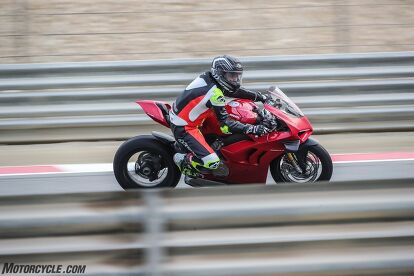
- Helmet: 6D ATS-1R Aero $745
- Suit: Alpinestars GP Tech v3 Race Suit For Tech Air Race $1999.95
- Gloves: Alpinestars GP Pro R3 $259.95
Boots: Alpinestars Limited Edition Crutchlow Supertech-R Boots $529.95
2020 Ducati Panigale V4 Specifications | |
|---|---|
| MSRP | $21,995, $28,395 (S Model) |
| Engine | Desmosedici Stradale 90° V4, counter-rotating crankshaft, 4 Desmodromic timing, 4 valves per cylinder, liquid-cooled |
| Displacement | 1103 cc |
| Bore x Stroke | 81 x 53.5 mm |
| Compression Ratio | 14.0:1 |
| Power | 214 hp at 13,000 rpm (claimed) |
| Torque | 91.5 lb-ft. at 10,000 rpm (claimed) |
| Fuel injection | Electronic fuel injection system. Twin injectors per cylinder. Full ride- by-wire elliptical throttle bodies. Variable length intake system |
| Exhaust | 4-2-1-2 system, with 2 catalytic converters and 2 lambda probes |
| Gearbox | 6 speed with Ducati Quick Shift (DQS) up/down EVO 2 |
| Primary Drive | Straight cut gears; Ratio 1.80:1 |
| Ratio | 1=38/14 2=36/17 3=33/19 4=32/21 5=30/22 6=30/24 |
| Final Drive | Chain; Front sprocket 16; Rear sprocket 41 |
| Clutch | Hydraulically controlled slipper and self-servo wet multiplate clutch |
| Frame | Aluminum alloy “Front Frame” with optimized stiffnesses |
| Front Suspension | Fully adjustable Showa BPF fork. 43 mm chromed inner tubes. (S Model: Öhlins NIX30 43 mm fully adjustable fork with TiN treatment. Electronic compression and rebound damping adjustment with Öhlins Smart EC 2.0 event-based mode). 4.7 in travel |
| Rear Suspension | Fully adjustable Sachs unit. Aluminum single-sided swingarm. (S Model:Fully adjustable Ohlins TTX36 unit. Electronic compression and rebound damping adjustment with Öhlins Smart EC 2.0 event-based mode. Aluminium single-sided swingarm). 5.1 in travel |
| Front Wheel | 5-spokes light alloy 3.50″ x 17″ (S Model: 3-spokes forged aluminum alloy) |
| Rear Wheel | 5-spokes light alloy 6.00” x 17” (S Model: 3-spokes forged aluminum alloy) |
| Front Tire | Pirelli Diablo Supercorsa SP 120/70 ZR17 |
| Rear Tire | Pirelli Diablo Supercorsa SP 200/60 ZR17 |
| Front Brake | 2 x 330 mm semi-floating discs, radially mounted Brembo Monobloc Stylema (M4.30) 4-piston calipers with Bosch Cornering ABS EVO |
| Rear Brake | 245 mm disc, 2-piston caliper with Cornering ABS EVO |
| Instrumentation | Last generation digital unit with 5″ TFT color display |
| Dry Weight | 386 lb (claimed) 384 lb (S Model) |
| Kerb weight | 436 lb (claimed) 430 lb (S Model) |
| Seat Height | 32.9 inches |
| Wheelbase | 57.8 inches |
| Rake | 24.5° |
| Trail | 3.94 inches |
| Fuel tank capacity | 4.23 gallons |
| Number of seats | Dual seat |
| Safety Equipment | Riding Modes, Power Modes, Cornering ABS EVO, Ducati Traction Control (DTC) EVO 2, Ducati Wheelie Control (DWC) EVO, Ducati Slide Control (DSC), Engine Brake Control (EBC) EVO, Auto tire calibration |
| Standard Equipment | Ducati Power Launch (DPL), Ducati Quick Shift (DQS) up/down EVO 2, Full LED lighting with Daytime Running Light (DRL), Sachs steering damper, Quick adjustment buttons, Auto-off indicators. (S Model:Ducati Power Launch (DPL), Ducati Quick Shift (DQS) up/down EVO 2, Full LED lighting with Daytime Running Light (DRL), Ducati Electronic Suspension (DES) EVO with Ohlins suspension and steering damper, Quick adjustment buttons, Lithium-ion battery, Auto-off indicators, Marchesini aluminium forged wheels, Racing style handle grips) |
| Optional Equipment | Ducati Data Analyser+ (DDA+) with GPS module, Ducati Multimedia System (DMS) and anti-theft, Ducati Lap Timer GPS (DLT GPS) |
| Warranty (months) | 24 months unlimited mileage |

Troy's been riding motorcycles and writing about them since 2006, getting his start at Rider Magazine. From there, he moved to Sport Rider Magazine before finally landing at Motorcycle.com in 2011. A lifelong gearhead who didn't fully immerse himself in motorcycles until his teenage years, Troy's interests have always been in technology, performance, and going fast. Naturally, racing was the perfect avenue to combine all three. Troy has been racing nearly as long as he's been riding and has competed at the AMA national level. He's also won multiple club races throughout the country, culminating in a Utah Sport Bike Association championship in 2011. He has been invited as a guest instructor for the Yamaha Champions Riding School, and when he's not out riding, he's either wrenching on bikes or watching MotoGP.
More by Troy Siahaan



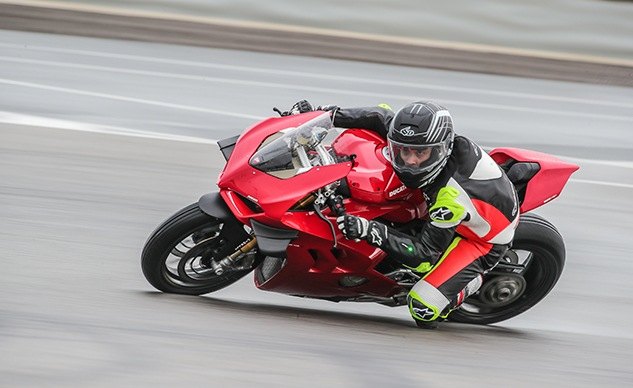




























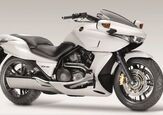
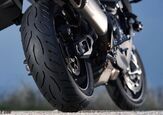
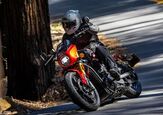

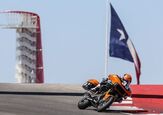
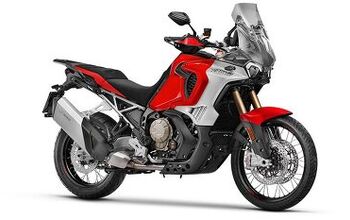

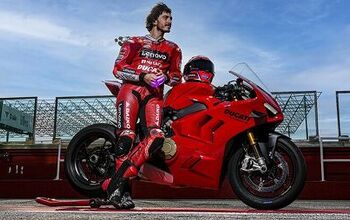
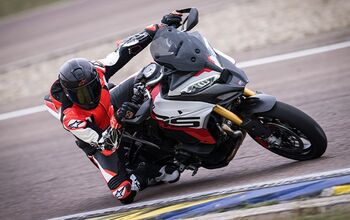
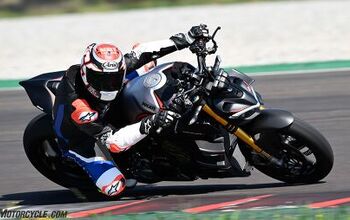
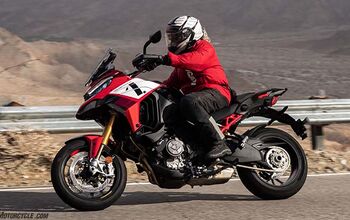
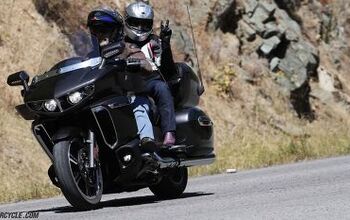
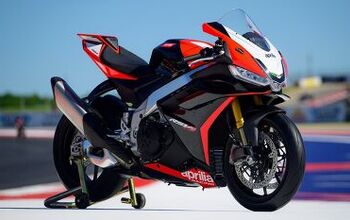
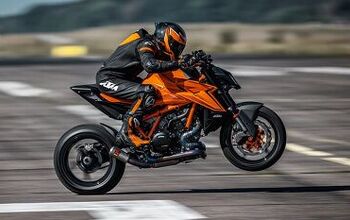
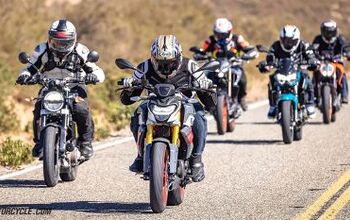
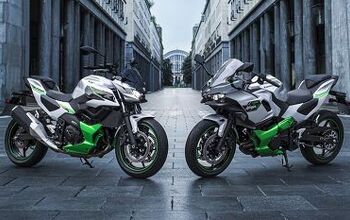
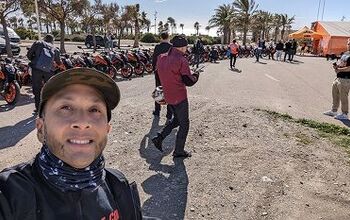
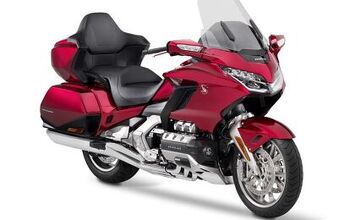
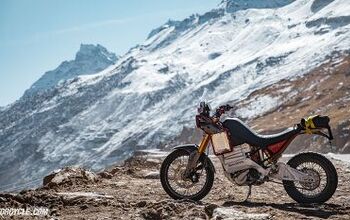
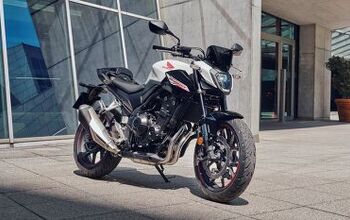
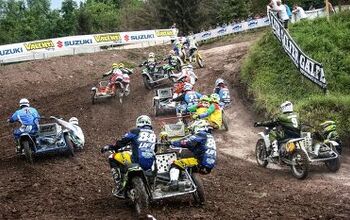
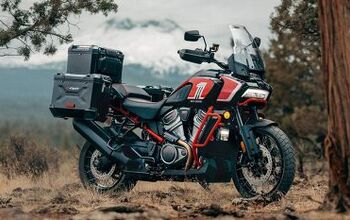
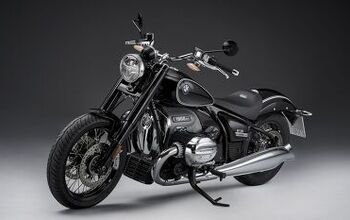
Comments
Join the conversation
I hope the heat issue has been improved with the new fairing. One thing that gave me pause to add a V4 (first-gen) was the reports of heat being worse than the lower extremity blast furnace that is my 1299.
Love everything else about the bike (looks, ergo, engine, brakes, etc). Heat was almost a deal-killer the first summer I had it. (Working on it is a PITA too, suspect the V4 is worse).
Problem with today’s bikes is cost and ability of home repair. Don’t get me wrong they are wonderful machines but you have to be making 6plus figures to afford them!! I still want them all haha!! Got to play the lotto